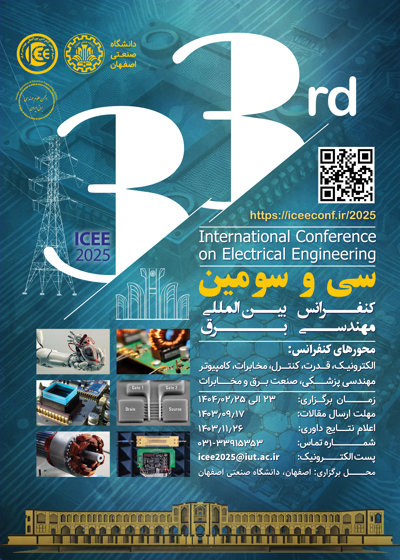0% Complete

نویسندگان :
کلمات کلیدی :
چکیده :
لیست مقالات بایگانی شده
افروز رفعت ماه - مهدی میری - نوید یثربی
Saeed Mousavi - Sara Ashrafi - Mehdi Delrobaei
Fatemeh Esmaeili - Zeynab Alipour - Mehdi Fardmanesh
مرضیه بهمنی - محسن شفیعیراد - مهدی زینالی - احسان ناظمالرعایا
Mohammad Reza SheykhAzimi - Mohammad Reza Nayeri - Mehdi Tale Masouleh - Ahmad Kalhor
Mohammad Mahdi Mazaheri - Motahareh BahmanAbadi - Mohammad Hossein Moaiyeri
فرشاد ارغنده - بیژن عباسی آرند - مریم حصاری شرمه
Sajad Esameili - Mohammad Amini - Amir Khorsandi - Seyed Hamid Fathi - Seyed Hossein Hosseinian - Jafar Millimonfared





